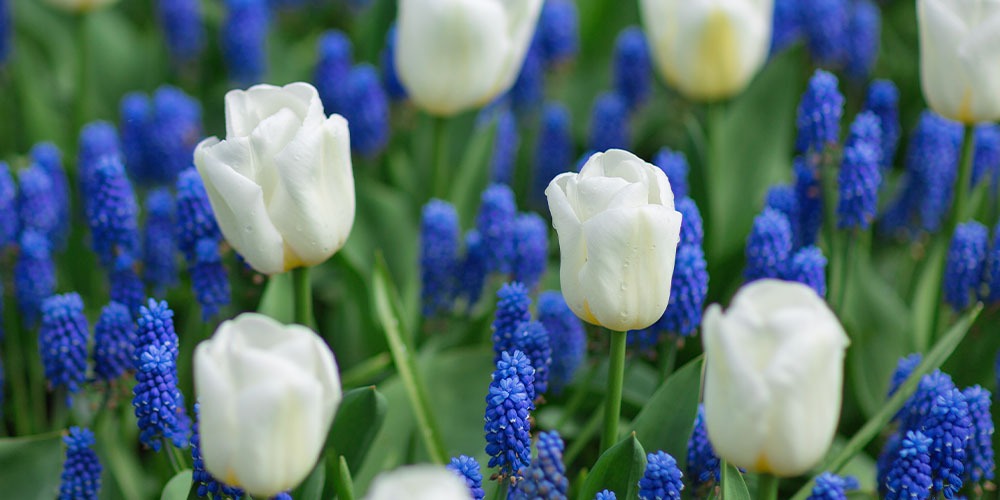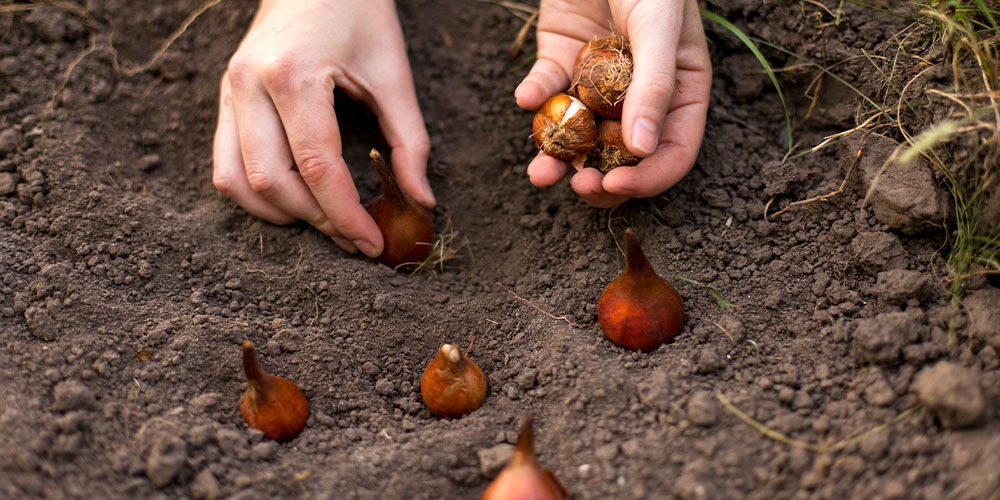Fall Patio Pot Workshop Now Open!
Register Now
As the leaves fall and the air becomes crisp, it’s easy to think the gardening season is over. But it is actually the perfect time to get your hands dirty one more time to plant Spring-Flowering Bulbs!
Bulbs probably have the best effort-to-return ratio of any plant. Planting is easy, they don’t need really any care, and we all know the excitement that comes from spotting those first bursts of color peeking back out after a long, gray winter - just when you need it most!
In Zone 7b, our winters are mild enough that bulbs can establish roots before the ground freezes but also cool enough to give them the chill they need to bloom beautifully in spring. By planting now (October through November), you’re giving bulbs just the right amount of time to settle in before dormancy.
Think of it as tucking them in for a long winter nap so that they can wake up ready to shine come March and April.
Spring-blooming bulbs—like tulips, daffodils, and hyacinths—need a period of cold soil to trigger a process called vernalization. During this time, the bulb senses consistent cool temperatures (typically between 35–45°F) that signal the transition from dormancy to growth readiness. This chilling period activates enzymes and hormones inside the bulb that break down stored carbohydrates and prepare the growing tip for flowering. Without that cold exposure, the bulb won’t fully develop its bloom structure, often resulting in weak or no flowers. Planting in fall ensures bulbs experience the gradual cooling they need through winter, so by spring they’re primed to sprout strong roots and send up healthy, vibrant blooms as soon as temperatures rise.
Some bulbs handle our Ozark climate better than others. Here are a few tried-and-true favorites that thrive locally:
And, you don’t have to limit yourself to just one type of bulb! Try layering early-, mid-, and late-spring bloomers in the same bed. For example: you could plant a bottom layer of Alliums, a middle layer of Tulips, and a top layer of Crocus or Hyacinths. Layering like this will give you a sequence of blooms that lasts for months!

Pro Tip: If you’re planting bulbs for the first time, try daffodils. They come up early, and are tough as nails. You’ll see results your first year (and for many years to come) from these guys.
Here’s the quick formula we use in our own gardens to set our Spring bulbs up for success:
Our Northwest Arkansas soil tends to be heavy clay in some spots, which is not a bulb’s favorite. If your soil doesn’t drain well, add compost or potting mix to loosen it up. In really dense areas, plant bulbs in raised beds or large containers with potting mix.

Once your bulbs are tucked in, your work is done until spring. Avoid overwatering! Mother Nature usually provides plenty of moisture for planted bulbs through the winter. Come March, you’ll see the first green shoots pushing through mulch, signaling the promise of another vibrant season ahead. And trust us, when your garden wakes up in bright color next spring, you’ll be glad you spent a crisp November afternoon planting.